How An Electric Furnace Works (A Simple Guide)
Last Updated on May 14, 2025 by Chad Peterson
How does an electric furnace work? All brands work about the same. All brands have nearly the same components. Electric furnaces are not overly complicated.
There are a couple of brands that incorporate circuit boards only to overcomplicate the simplicity of the furnace and raise the cost.
A thermostat controls a sequencer in the furnace. The sequencer (or circuit board) has switches that close to turn on power to the elements. The sequencer can turn on the fan to blow air over the elements, sending warm air through the ductwork and out the registers.
An electric furnace is just like a hair dryer. Inside the round neck end of the hair dryer is an element that heats up when you turn it on. The fan comes on at the same time and blows air over the element and heat comes out.
Have you ever had a hair dryer that the filter on the end where the air goes in, gets plugged with lint like stuff and the dryer doesn’t blow warm air anymore? That’s because the hair dyer has a limit. A limit is a heat sensitive switch that opens up and turns off the element to keep the hair dryer from catching fire.
Electric furnaces are no different than that hair dryer. The controls are a little bigger and so is the amount of heat they can produce.
The essential parts of an electric furnace are:
- Breakers or Fused Disconnect
- 24 Volt Transformer
- Sequencer
- Limits
- Elements
- Blower
- Blower relay
Pretty much a big hair dryer, right? If you enter “electric furnace parts” into the Amazon search bar you can see a variety of parts, some of them are not electric furnace parts. But after reading this article you will be able to recognize the parts that apply.
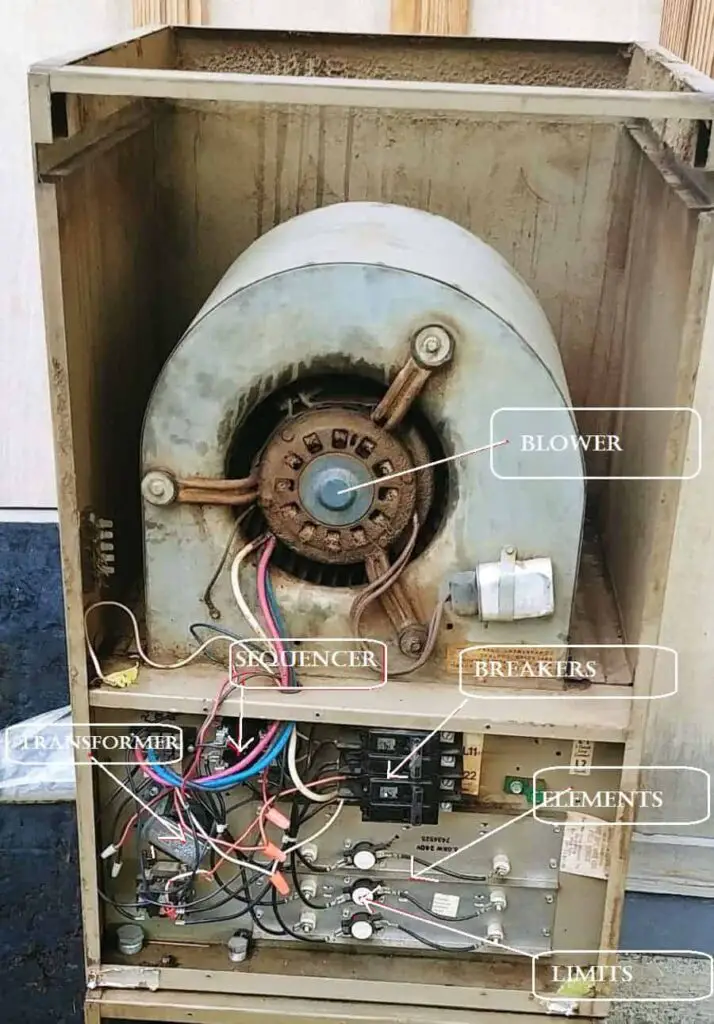
This was a pretty nasty furnace, huh? It was a very much neglected furnace. But it contains all the basic parts. The blower motor is mounted on a bracket to the blower housing.
Inside the blower housing is a squirrel cage blower. Yes, the kind you see in cartoons with squirrels running around inside. When the motor spins it pulls air in and blows it down and over the elements below.
Electric furnaces such as this can be mounted to ductwork in any direction, including upside down and sideways. They can blow down, up, or horizontal.
Some inquisitive, researching persons have asked “how does a electric Coleman furnace work?” and I’d have to say just like a Goodman, Trane electric furnace or any other brand. Electric furnaces are most all basically the same.
Some of these furnaces use different styles of sequencers or convert the AC voltage to DC. How can this result in increased efficiency?
One is not more efficient than the other. You put one penny’s worth of electricity in and you will get one penny’s worth of heat out.
Adding a heat pump can be more efficient if added to an electric furnace where a refrigeration system heats your home during moderately cold weather and the electric furnace is backup heat during severely cold weather.
What Does A 24 Volt Transformer Do?
A transformer in these furnaces does just that, it transforms 120 volts or 240 volts down to a more manageable voltage of 24 volts. Inside the control panel in the furnace are all the relays and switches that turn stuff on or off.
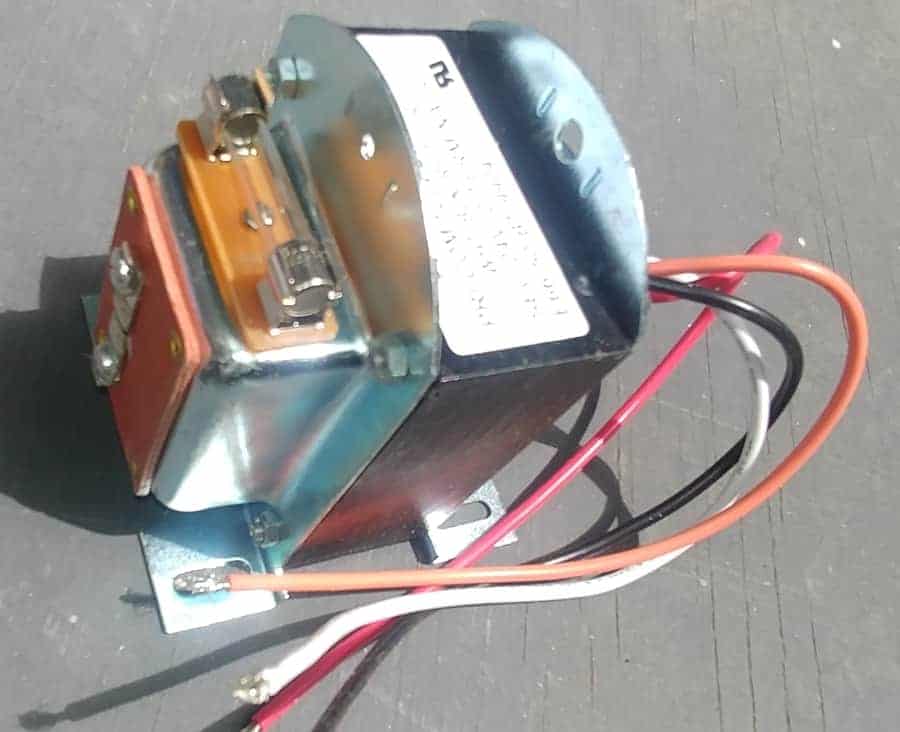
Having a lower voltage makes these controls easier to wire and safer to work on, especially when running thermostat wire to central locations in a home. Thermostat wire is usually 18 gauge wire versus 14, 12, and 10 gauge wire for most circuits in a residence.
The larger the number the smaller the wire.
If you ever need to change out a 24 volt transformer be sure to purchase a fused transformer.
I prefer and carry in my service truck an auto reset transformer. Trouble shooting shorted circuits is a lot more fun when all you have to do is reset the transformer rather that replace a fuse.
What Is An Electric Furnace Sequencer?
Also an appropriate name for a part. The sequencer, is powered by the 24 volt thermostat when the thermostat makes a call to heat and in turn the elements come on in sequence.
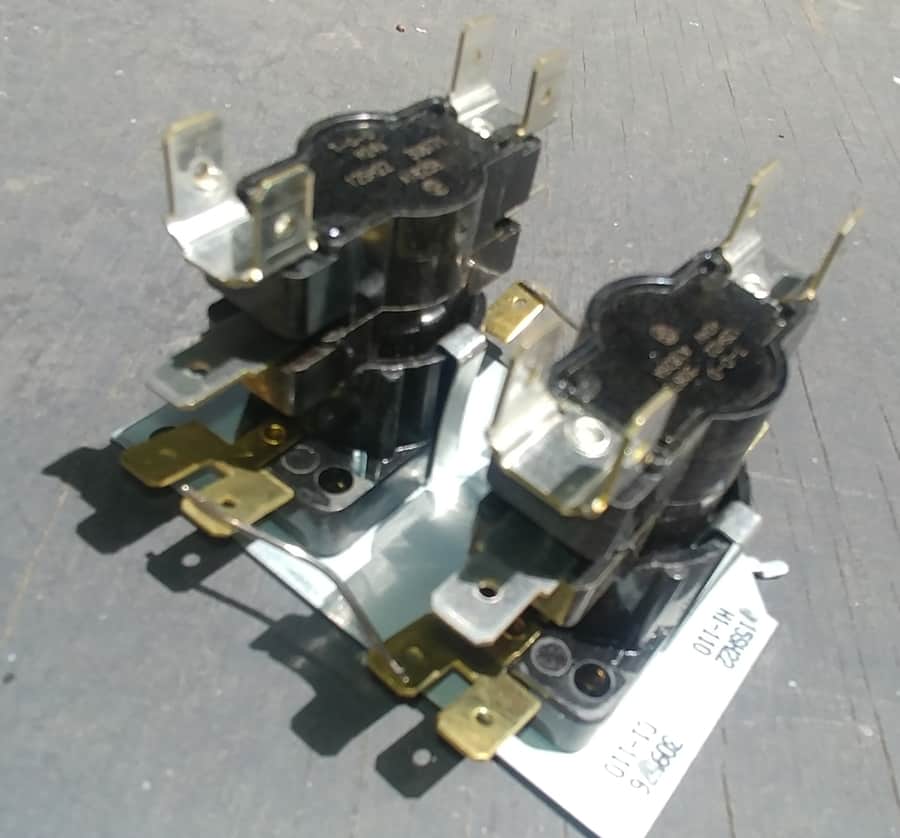
This is just one example of what a sequencer looks like. They take on several shapes and forms but they all do the same thing, turn on the elements gradually so the load on the electric panel is not all at once but a little bit at a time.
Electric Furnace Limit Switch
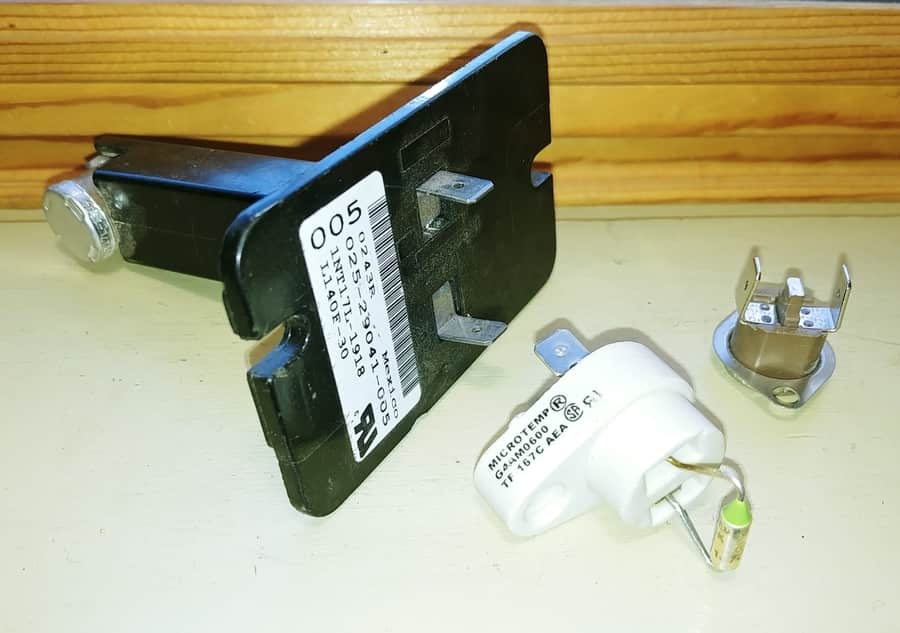
You can find more that one limit switch in most any furnace. The reason is for safety. When fan motors quit or filters get neglected and plugged up then limit switches come into play and shut things down.
Electric Furnace Elements
Just like that element you can see looking down the throat of your hair dryer these curly wires get hot when electricity flows through them.
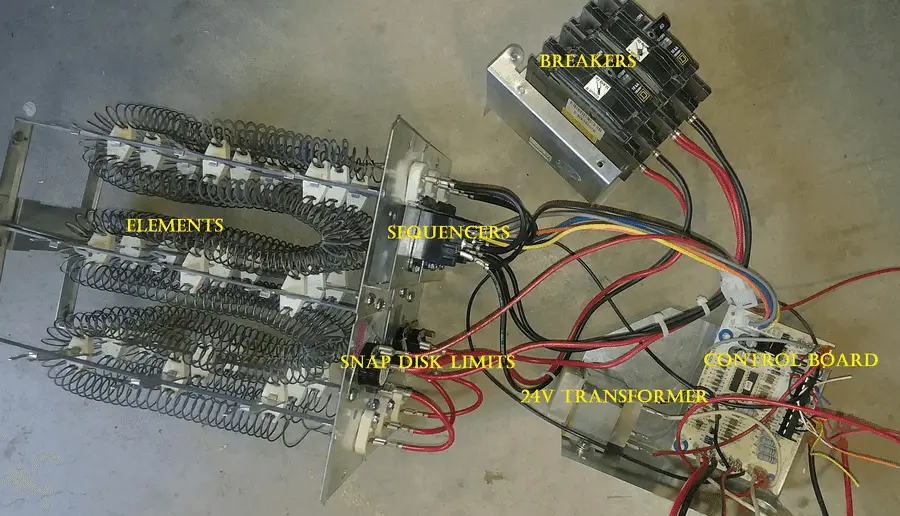
Now that you have been introduced to the basic parts and operation of an electric furnace you can sort of put all these parts together as in the image above.
All you have to do is add the blower wheel and motor. The result when installed into a cabinet like the image at the top of this post, is an electric furnace.





